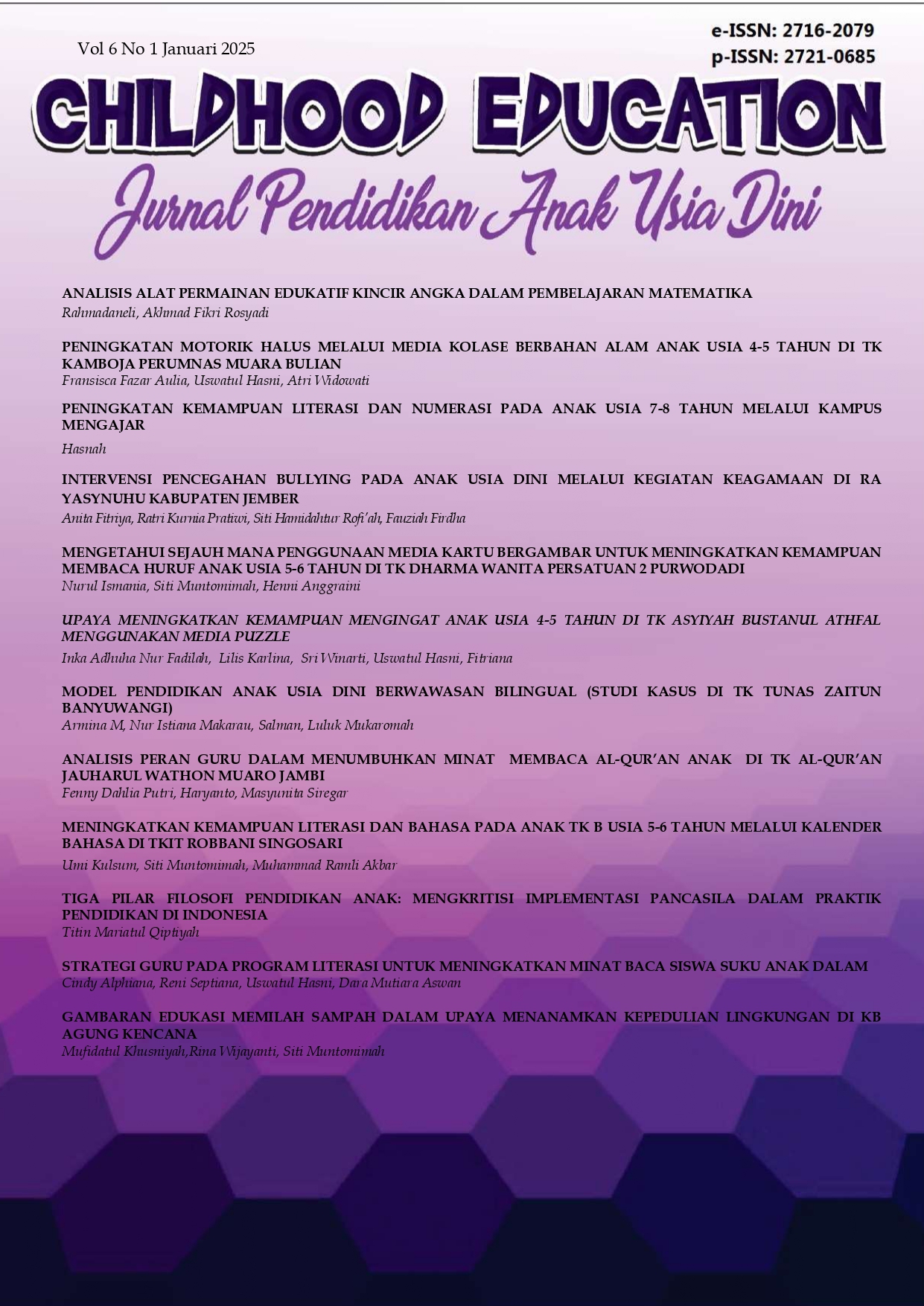Diterbitkan
2025-01-31
##submission.howToCite##
Febrianty, A., & Yaswinda, Y. (2025). Pengaruh Metode Eksperimen Sawi Putih Terhadap Kemampuan Berpikir Kritis Anak Usia Dini Di Taman Kanak-Kanak Pertiwi 1 Kantor Gubernur Padang. Childhood Education : Jurnal Pendidikan Anak Usia Dini, 6(1), 138-150. https://doi.org/10.53515/cej.v6i1.6572
Terbitan
Bagian
Articles
Childhood Education: Jurnal Pendidikan Anak Usia Dini
e-ISSN (Online) 2716-2079
p-ISSN (Print) 2721-0685
Email Journal:
jurnalpiaudstaiqod@gmail.com
ABOUT THIS JOURNAL:
Editorial Team
Focus and Scup
Peer Reviewers
Periode of Publication
Open Access Statement
Article Processing Charge
Plagiarism Check
License Term
Histori Jurnal
Online Submission
Contact
Bahasa
Informasi
Childhood Education Jurnal Pendidikan Anak Usia Dini
Jurusan Pendidikan Islam Anak Usia Dini (PIAUD) Fakultas Tarbiyah
Institut Agama Islam (IAI) Al-Qodiri Jember
Jln. Manggar Gebang Poreng 139A Patrang Jember Jawa Timur
Email Jurnal: jurnalpiaudiaialqodiri@gmail.com

This work is licensed under a Creative Commons Attribution 4.0 International License.









